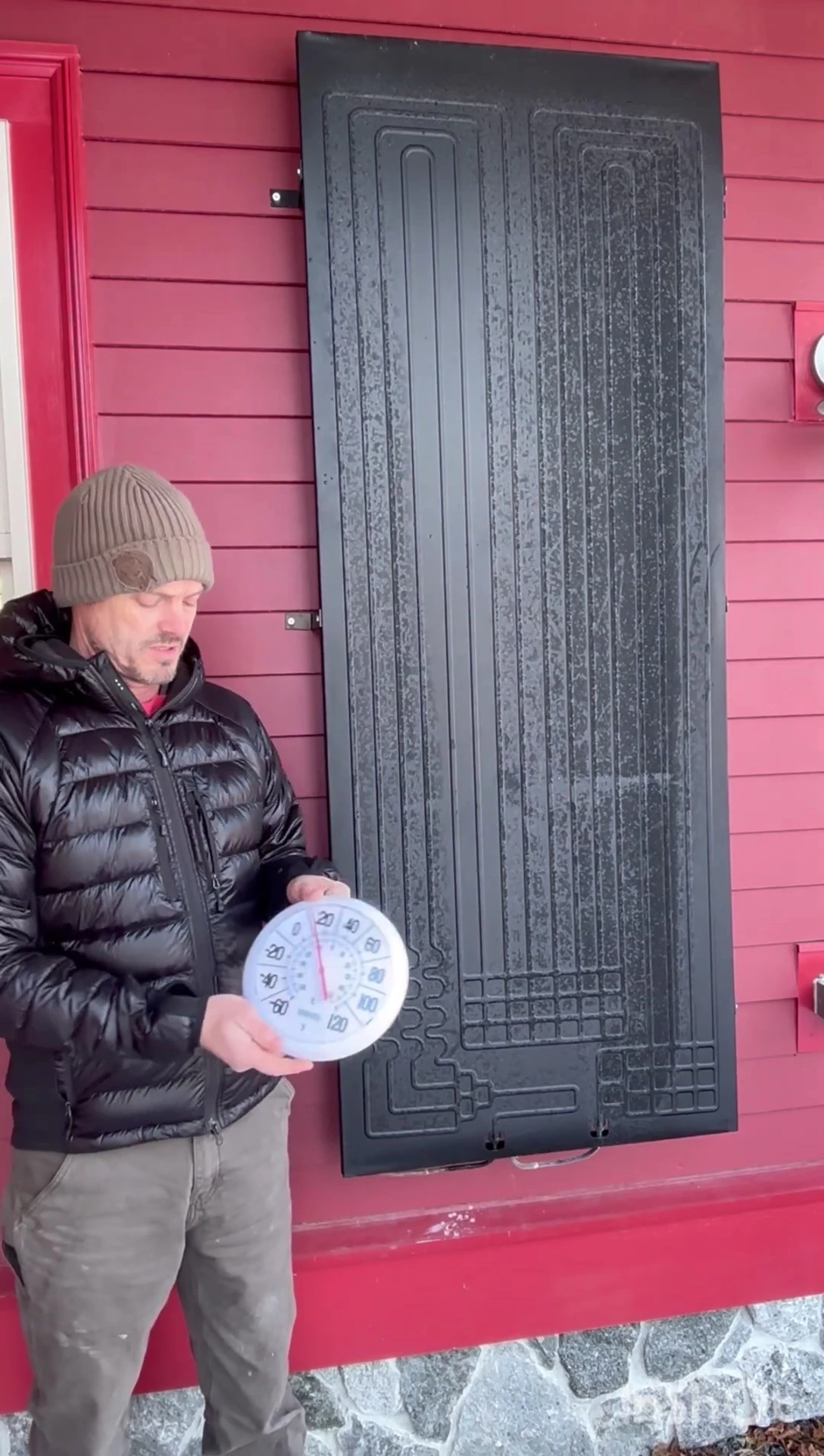This review examines the performance of the Smart Solar heat pump water heater in cold weather conditions, a crucial factor often overlooked in heat pump assessments. Unlike traditional hybrid systems that draw heat from indoors, the Smart Solar unit utilizes an external evaporator, enabling it to extract heat even at sub-freezing temperatures. This innovative design addresses the common concern of reduced efficiency in cold climates experienced by indoor heat pump water heaters. The review delves into the system's three-pronged heat collection approach: convection, phase change, and solar energy, showcasing its ability to consistently provide hot water even on cold, sunless days.The analysis compares the Smart Solar system's real-world performance to the often-inflated claims of indoor units. It highlights how the external evaporator mitigates the significant efficiency losses seen in indoor systems operating in cold, dry basements or garages. The review considers the system's Coefficient of Performance (COP) under varying conditions, including the impact of temperature and humidity on its overall efficiency. Finally, it weighs the higher initial investment against the long-term energy savings and superior reliability in extreme weather, making a compelling case for the Smart Solar system's practicality and value, especially in cold climates.
Pros And Cons
- Heat pump evaporator is outside, eliminating the need to steal heat from indoors.
- Works three ways to create heat: convection, phase change (from water vapor to frost), and sunlight.
- Provides hot water even in cold conditions with minimal sunlight.
- In cold conditions, output is low (900 watts in the example, compared to a typical family's 10kW daily usage).
- Compressor has to run longer in cold conditions to heat the water.
- Performance is significantly better in warmer conditions with more sunlight and humidity.
Read more: Nuwave PIC Titanium Induction Cooktop Review: A Mixed Bag of Features
How the Smart Solar Heat Pump Water Heater Works in Cold Weather
The Smart Solar system boasts an external evaporator, unlike traditional hybrid heat pump water heaters that draw heat from indoors. This is a significant advantage, especially in cold climates. The system's ability to extract heat from the ambient air, even at sub-freezing temperatures, is remarkable. This external evaporator enables the system to operate efficiently even when temperatures plummet, ensuring a consistent supply of hot water.

This innovative design addresses the common concern of heat pump water heater performance in cold climates. The evaporator panel leverages three mechanisms for heat collection: convection, phase change (frost formation), and solar energy. Even on a snowy, sunless day, the system is still producing hot water, demonstrating its versatility and robust functionality.

Three Ways the Smart Solar Panel Collects Heat
Convection plays a key role. The cold refrigerant passes through the panel, absorbing heat from the surrounding air even when it’s cold. The refrigerant, much colder than the outside air, effectively absorbs the heat. This process, even in 20°F weather, allows the system to extract enough energy to heat water.

Secondly, phase change contributes significantly. The frost accumulating on the panel indicates that water vapor from the air is condensing into frost. This phase change releases energy, which is transferred to the refrigerant, further boosting the system’s heating capacity.
Finally, the panel also collects solar energy. While not as significant in winter, direct sunlight on the panel adds to the overall heat collection, and is a major contributor during warmer months. This three-pronged approach ensures efficient operation even in less-than-ideal conditions.
Performance and Efficiency in Cold Weather
While the system produces hot water even in cold weather, the output is naturally lower than in optimal conditions. On the day of the demonstration, the system produced around 900 watts, considerably less than the 10kW a typical family uses daily. While this lower output increases the compressor's runtime, the system's capacity is still substantial.
The coefficient of performance (COP) of the system varies with conditions; in this cold weather, it was around 2. In warmer, sunnier conditions with higher humidity, the COP can reach 4 or even 5, significantly boosting efficiency. The system’s large tank capacity (120 gallons) helps buffer against periods of lower output.
Comparison with Conventional Hybrid Heat Pump Water Heaters
The reviewer explains the advantages of the external evaporator over traditional indoor hybrid systems. While indoor systems might boast high nameplate COPs (e.g., 3.5-4), these numbers are often achieved under ideal test conditions (67°F, 50% humidity). In a typical cold, dry basement or garage, these high COPs are rarely achieved. The actual COP drops significantly, leading to reduced efficiency and higher energy bills.

Furthermore, using an indoor heat pump in a cold space can negatively impact other systems. If you are heating the space with an oil boiler, the heat pump will cool the room, requiring more oil to maintain temperature. This adds to the operating costs and reduces the overall energy efficiency.
Conclusion: Is the Smart Solar Heat Pump Water Heater Worth It?
The Smart Solar heat pump water heater offers a compelling solution for hot water production, even in challenging cold-weather conditions. While its output is reduced in freezing temperatures, it consistently provides hot water and its three-way heat collection system demonstrates impressive versatility. This system is advantageous compared to conventional indoor hybrid units, which often fall short of their advertised efficiency in real-world scenarios due to the ambient temperature and humidity.
The higher initial cost might seem daunting, but the long-term energy savings and the reliability in extreme weather conditions, make it a sound investment, especially when compared to the hidden costs and reduced efficiency of conventional hybrid systems in cold climates.
